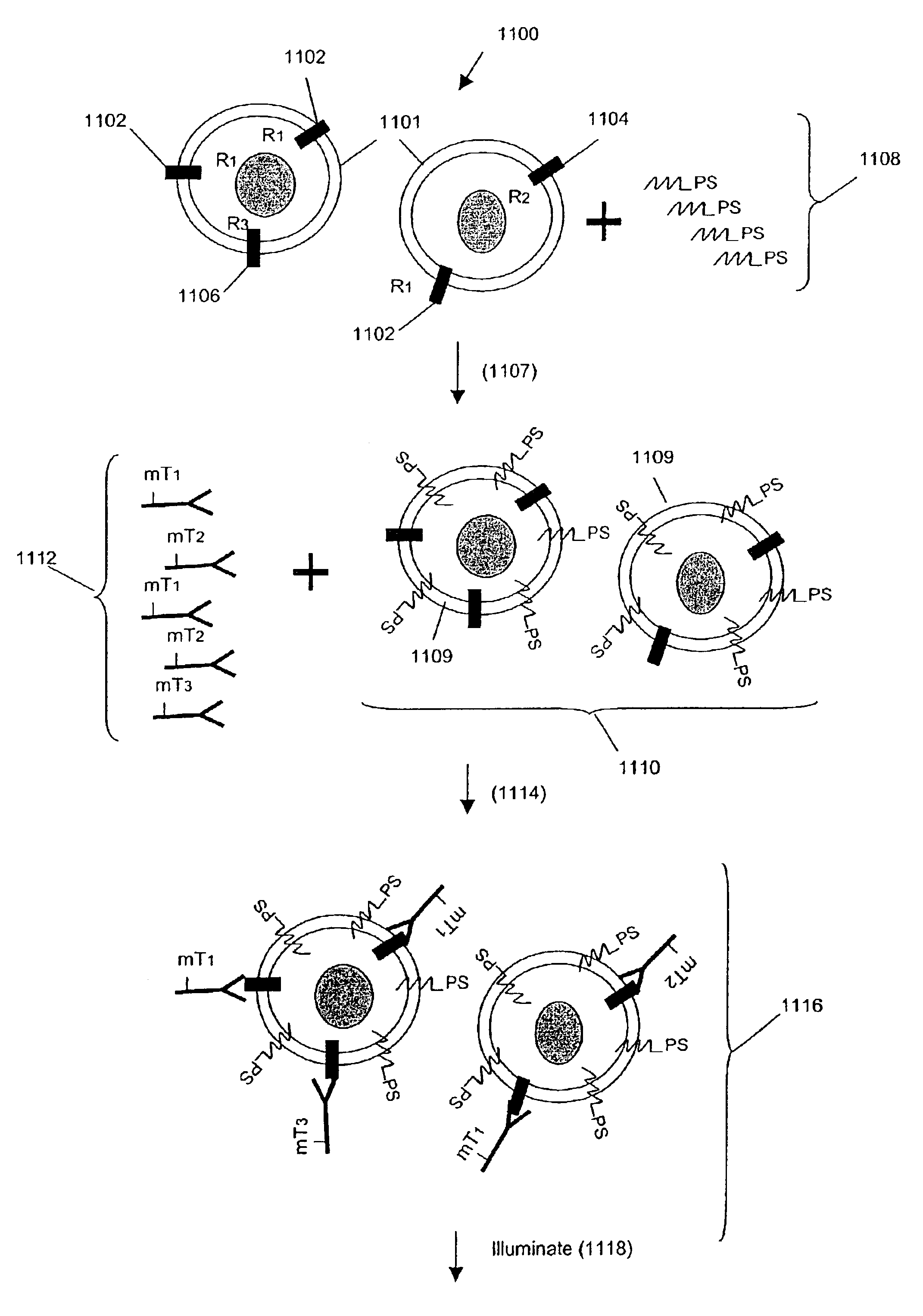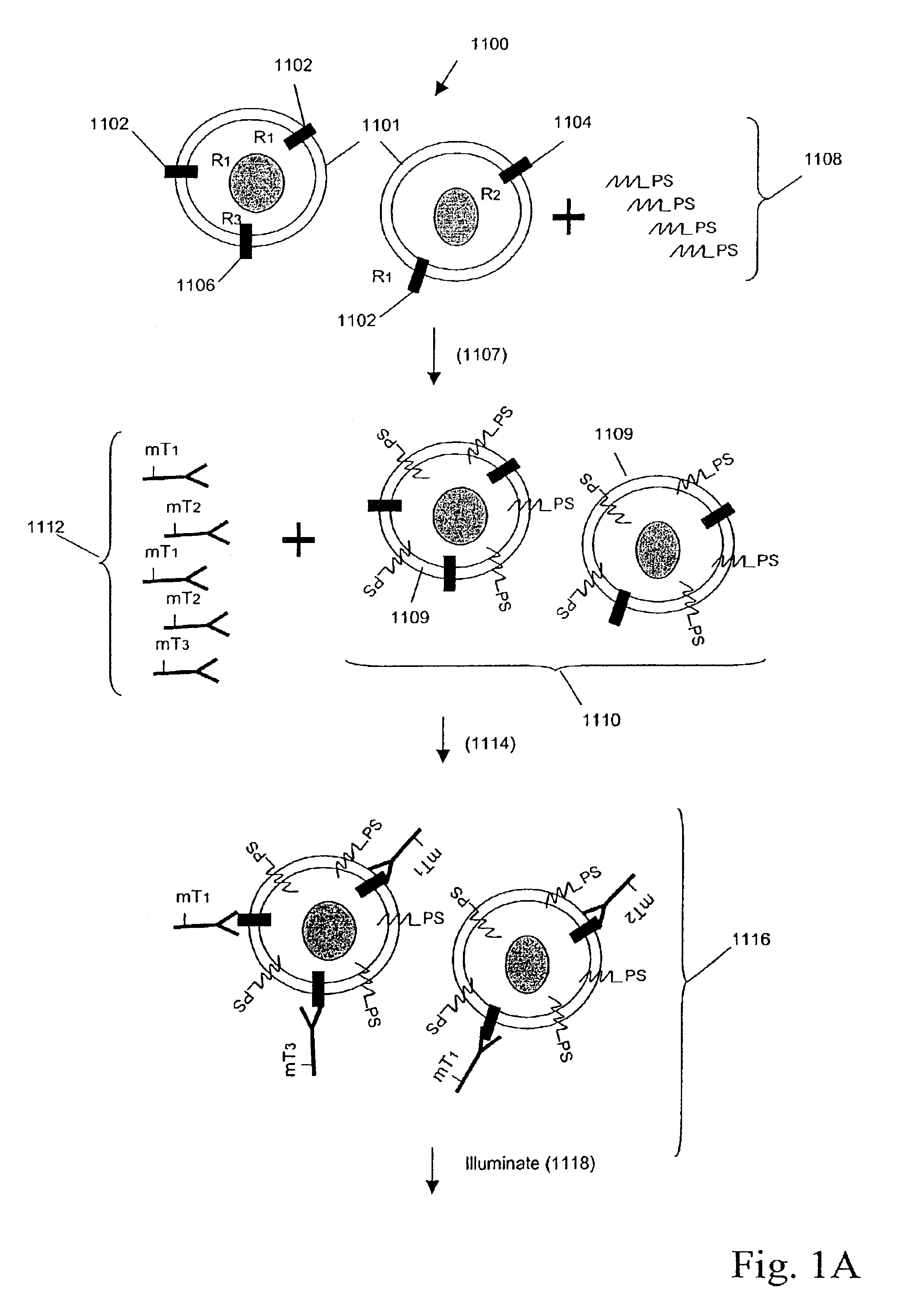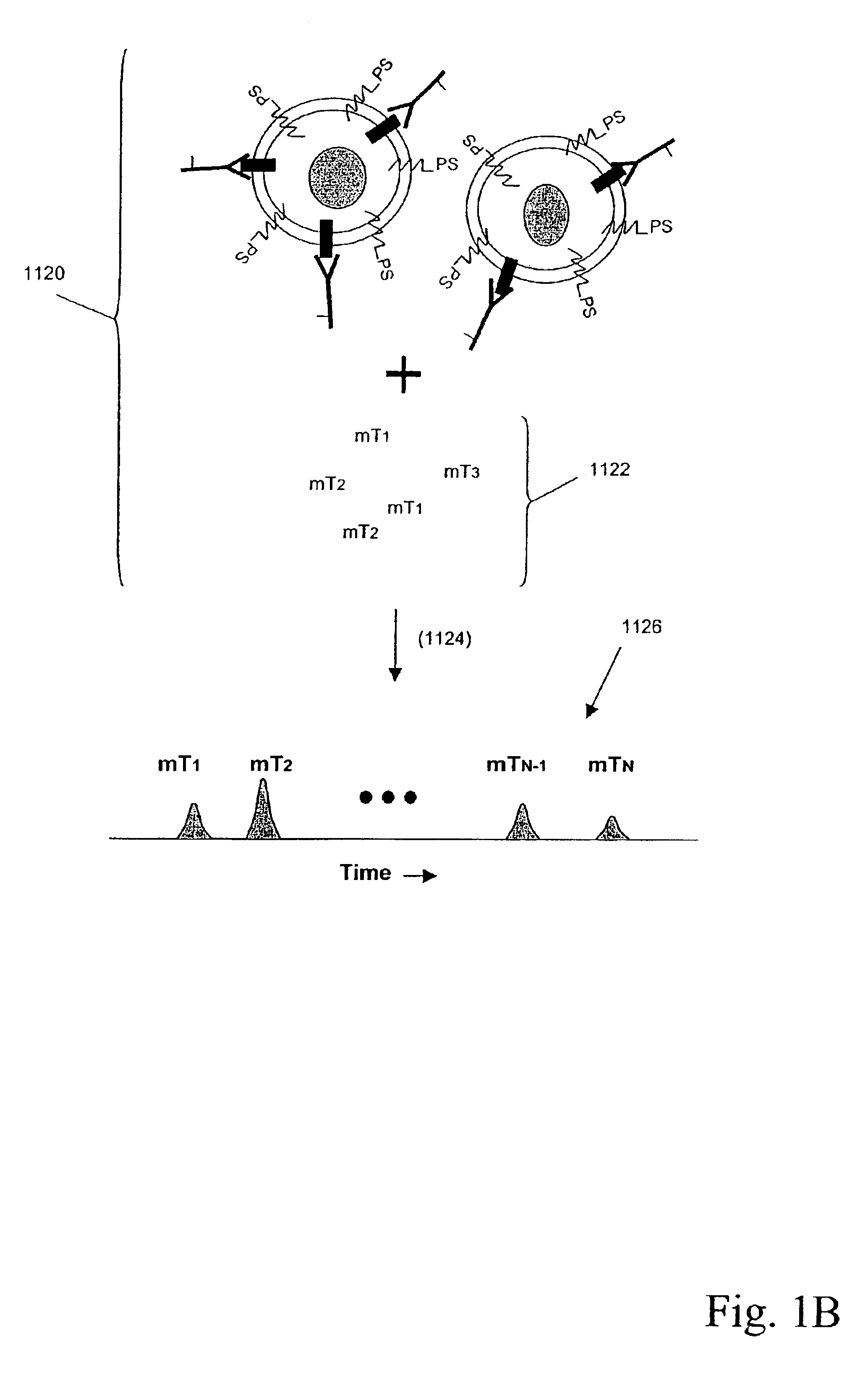Multiplex analysis using membrane-bound sensitizers
a sensitizer and multi-layer technology, applied in the field of multi-layer analysis using membrane-bound sensitizers, can solve the problems of no comparable technology available for making global or system-wide measurements, and the challenge of studying such processes, and achieve the effects of convenient multiplexing capability, reduced background, and increased sensitivity
- Summary
- Abstract
- Description
- Claims
- Application Information
AI Technical Summary
Benefits of technology
Problems solved by technology
Method used
Image
Examples
example 1
Conjugation and Release of a Molecular Tag
[0230]FIG. 7A-B summarize the methodology for conjugation of molecular tag precursor to an antibody or other binding compound with a free amino group, and the reaction of the resulting conjugate with singlet oxygen to produce a sulfinic acid moiety as the released molecular tag. FIG. 8A-J shows several molecular tag reagents, most of which utilize 5- or 6-carboxyfluorescein (FAM) as starting material.
example 2
Preparation of Pro2, Pro4, and Pro6 through Pro13
[0231]The scheme outlined in FIG. 9A shows a five-step procedure for the preparation of the carboxyfluorescein-derived molecular tag precursors, namely, Pro2, Pro4, Pro6, Pro7, Pro8, Pro9, Pro10, Pro11, Pro12, and Pro13. The first step involves the reaction of a 5- or 6-FAM with N-hydroxysuccinimide (NHS) and 1,3-dicylcohexylcarbodiimide (DCC) in DMF to give the corresponding ester, which was then treated with a variety of diamines to yield the desired amide, compound 1. Treatment of compound 1 with N-succinimidyl iodoacetate provided the expected iodoacetamide derivative, which was not isolated but was further reacted with 3-mercaptopropionic acid in the presence of triethylamine. Finally, the resulting β-thioacid (compound 2) was converted, as described above, to its NHS ester. The various e-tag moieties were synthesized starting with 5- or 6-FAM, and one of various diamines. The diamine is given H2N^X^NH2 in the first reaction of F...
example 3
Characterization of Cell Surface Receptor Binding Using a Protein-Molecular Tag Conjugate
[0247]To demonstrate that the amount of probe tag released is related to total number of receptors in the cell sample, a ligand-receptor assay like that described in Section II above was carried out by adding a fixed amount (about 55 nM) protein probe (TNF-tag) added to samples containing increasing numbers of target cells (U937 cells) that respond to TNF. In each sample, the probe was incubated with the cells for 60 minutes, then the sample irradiated at 640-700 nm to release bound etags. The sample was separated by capillary electrophoresis, and the amount of released probe from each sample quantitated as area under the curve. In this, and the assays described below, the cells were initially modified to contain a cell-surface sensitizer agent.
[0248]The results are plotted in FIG. 17, which shows the detected level of a molecular tag, expressed as RFU (relative fluorescence units), plotted as a...
PUM
| Property | Measurement | Unit |
|---|---|---|
| molecular weight | aaaaa | aaaaa |
| molecular weight | aaaaa | aaaaa |
| diameter | aaaaa | aaaaa |
Abstract
Description
Claims
Application Information
 Login to View More
Login to View More - R&D
- Intellectual Property
- Life Sciences
- Materials
- Tech Scout
- Unparalleled Data Quality
- Higher Quality Content
- 60% Fewer Hallucinations
Browse by: Latest US Patents, China's latest patents, Technical Efficacy Thesaurus, Application Domain, Technology Topic, Popular Technical Reports.
© 2025 PatSnap. All rights reserved.Legal|Privacy policy|Modern Slavery Act Transparency Statement|Sitemap|About US| Contact US: help@patsnap.com



